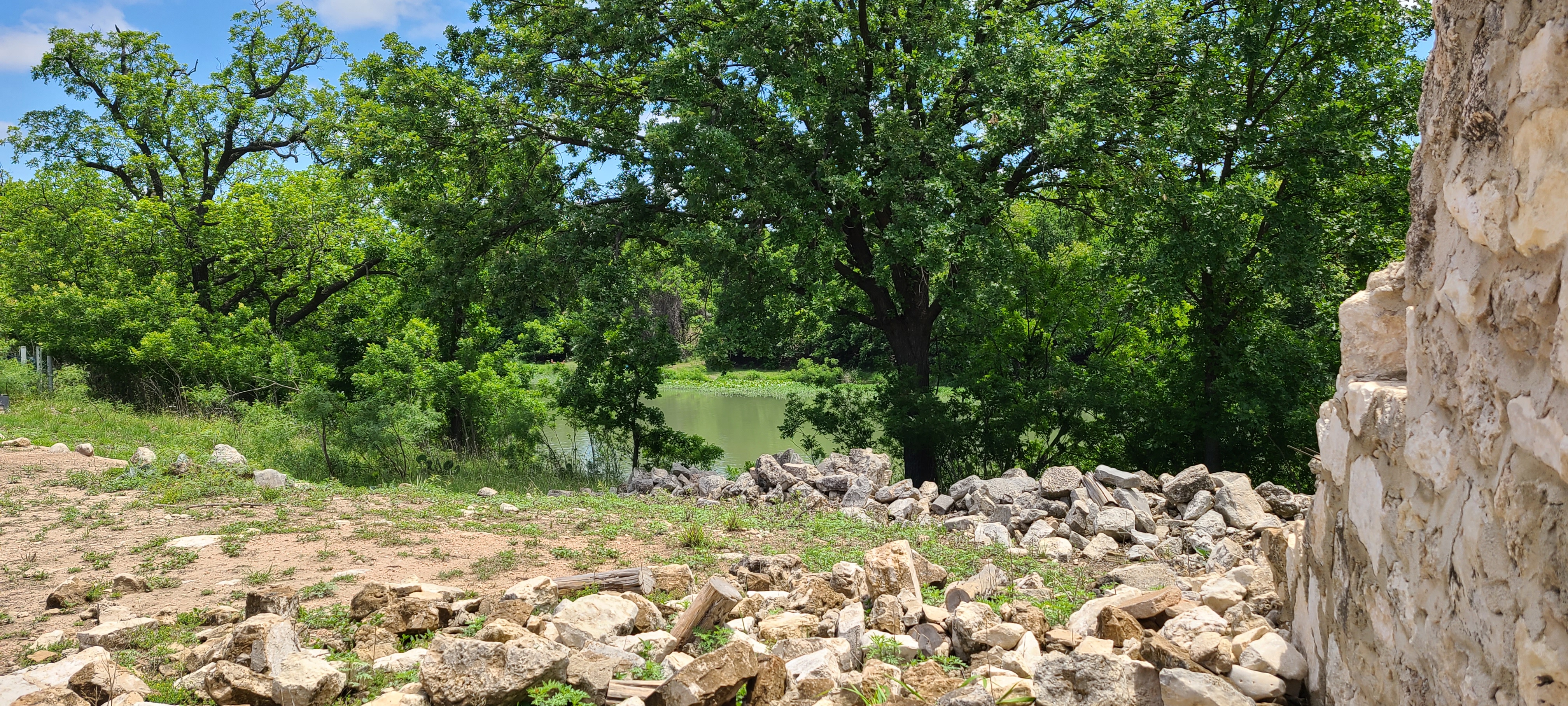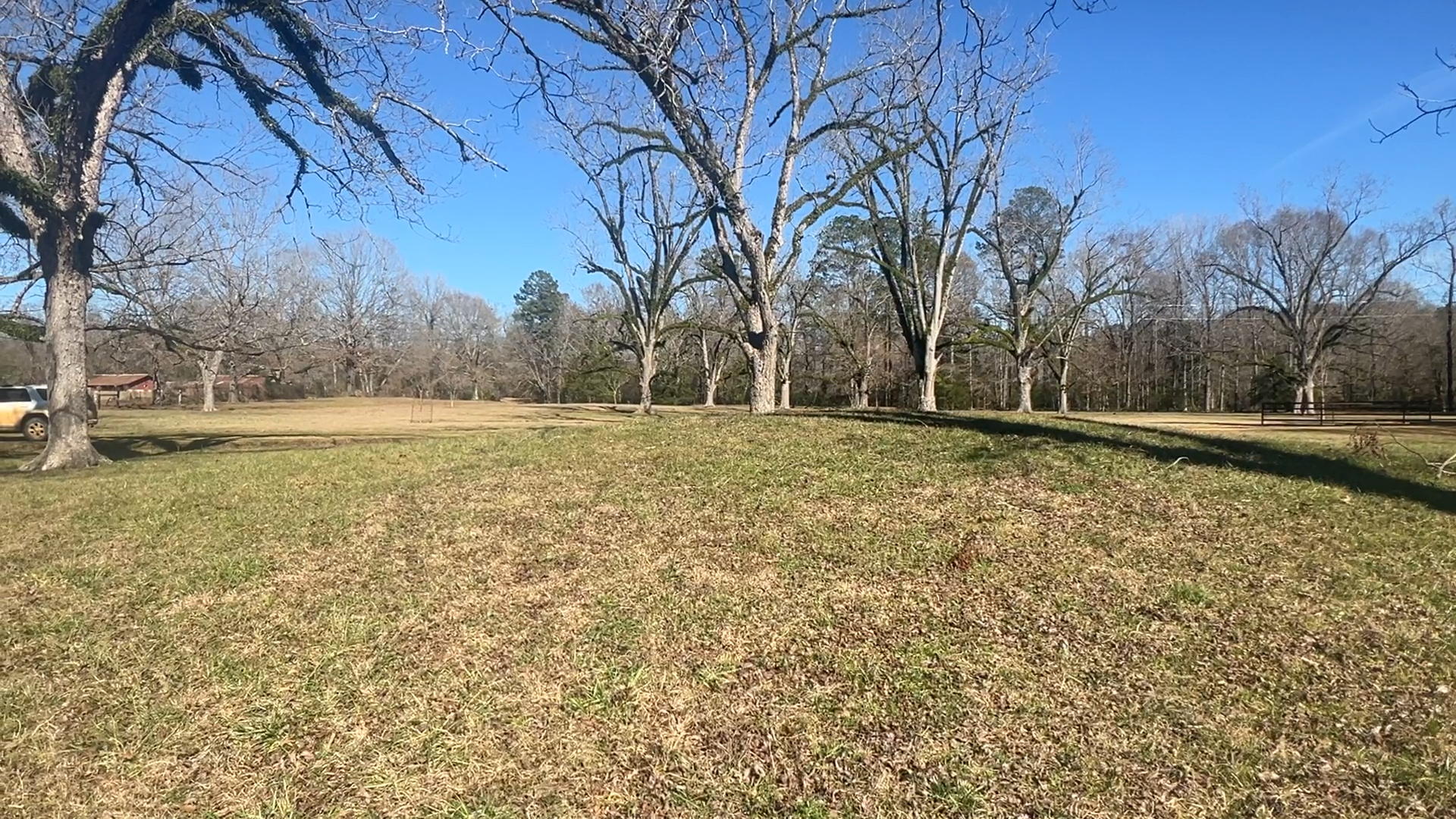
Camp Wood is a Lipan Apache site located on the east bank of the Nueces River in south-central Texas. The site sits next to Mission San Lorenzo, an 18th century Spanish Mission that was established by Franciscan friars in 1762 in an effort to convert the Lipan Apache and to maintain Spanish control of the northern frontier. Although the mission only lasted nine years, they managed to build more than 14 buildings of adobe and limestone situated around a plaza. Archaeological research at the site has found a granary, mission church, and numerous artifacts from that period.
The Lipan Apache did not live within the mission walls, but camped by a spring on the Camp Wood site. Despite being exposed to European influences for over 200 years, the Lipan Apache still practiced a number of native crafts and traditions. A large midden containing chipped stone tools (small knives and scrapers), lithic debris and pottery was found there. Research at the site may cast light on the relationship between the missionaries and the Lipan Apache.
The site also contains a portion of Historic Camp Wood which was established by the U.S. Military in 1857 to protect the San Antonio-El Paso route and the Rio Grande valley from Indian raids. A map of the camp from the 1860s shows many buildings including a bakery, officer’s quarters, and a laundry station. A midden containing historic artifacts was found and there are likely more artifacts and ruins underground.
There is an active pay-to-dig industry in this community which targets older archaic sites and in the process destroys historical components. Many archaeologists in the area are concerned about this movement and have worked closely with the owners of Camp Wood to make them aware of it. So far, no pay-to-dig activity has occurred on the property, however the land is for sale and there is no guarantee that the buyers will protect the site. The owners are selling the property for $310,000 and have offered the Conservancy the opportunity to buy the site before it is listed. We have been awarded a $200,000 grant and need to raise the remaining $110,000 to acquire the site plus funds for fencing and maintenance.

Spokane Mound is believed to be a Late Woodland (ca. A.D. 850 – 1100) mound on Lynn Creek south of Natchez, Mississippi. It was first recorded as a single mound site in the 1930s by archaeologist James A. Ford, a student at Louisiana State University who would go on to become one of the most important and well-known pioneers in American archaeology.
Little is known about this site as it hasn’t been professionally excavated, but surface collections of pottery have helped date the site to the Late Woodland period attributed to the Coles Creek Culture. If Spokane Mound is a Coles Creek mound site, it was likely a ceremonial center with a plaza and included other mounds. Due to past disturbances, we know that the mound contains burials. A single mound site with burials fits better with earlier Middle Woodland cultures dating to approximately A.D. 100, but to date, no Middle Woodland pottery has been found at the site. Impacted by years of agriculture, the mound now stands about 5 feet high with a base that is about 65 feet by 36 feet.
Using LiDAR, an archaeologist noticed what may be another mound at the site. This area could just be the “toe” of a ridge which is visible rising into the bluffs across the road, or perhaps it is another mound. The distal end of a Late Archaic (ca. 4000 – 1000 B.C.) projectile point was found on the ridge and could indicate an even earlier occupation than the Middle or Late Woodland period. Further research at the site could determine if there is more than one mound and during which time periods the area was occupied.
The owners are selling the 16 acre parcel containing the mound as well as a house for $280,000. We plan to sell seven acres containing the house for $200,000 and need to raise $80,000 to cover the cost of the remaining nine acres that Spokane Mound sits on.
Camp Wood and Spokane Mound are just two of the many sites we are currently working to protect. Right now, we’re working on acquiring a Chumash and Tongva prehistoric ceremonial site in California that was occupied from 300 B.C. to A.D. 1780 and an Early, Middle and Late Woodland Mound group in Illinois.
--------------------------------------------------------------------------------------------------
The Conservancy’s Preservation Fund, a revolving fund that supports the purchase of endangered archaeological sites, provides us with the resources to purchase sites, cover the cost of taking legal interest, and fence and stabilize the sites. The Preservation Fund is essential to the purchase and long-term protection of each and every one of our preserves.
Your gift of $25, $50, $100 or more for the Preservation Fund, designated for Camp Wood or Spokane Mound, will make such a difference in our efforts to preserve these endangered archaeological sites.
Use the Designation dropdown below to indicate how you would like your Preservation Fund to be designated and know your donation makes preservation of cultural heritage possible.